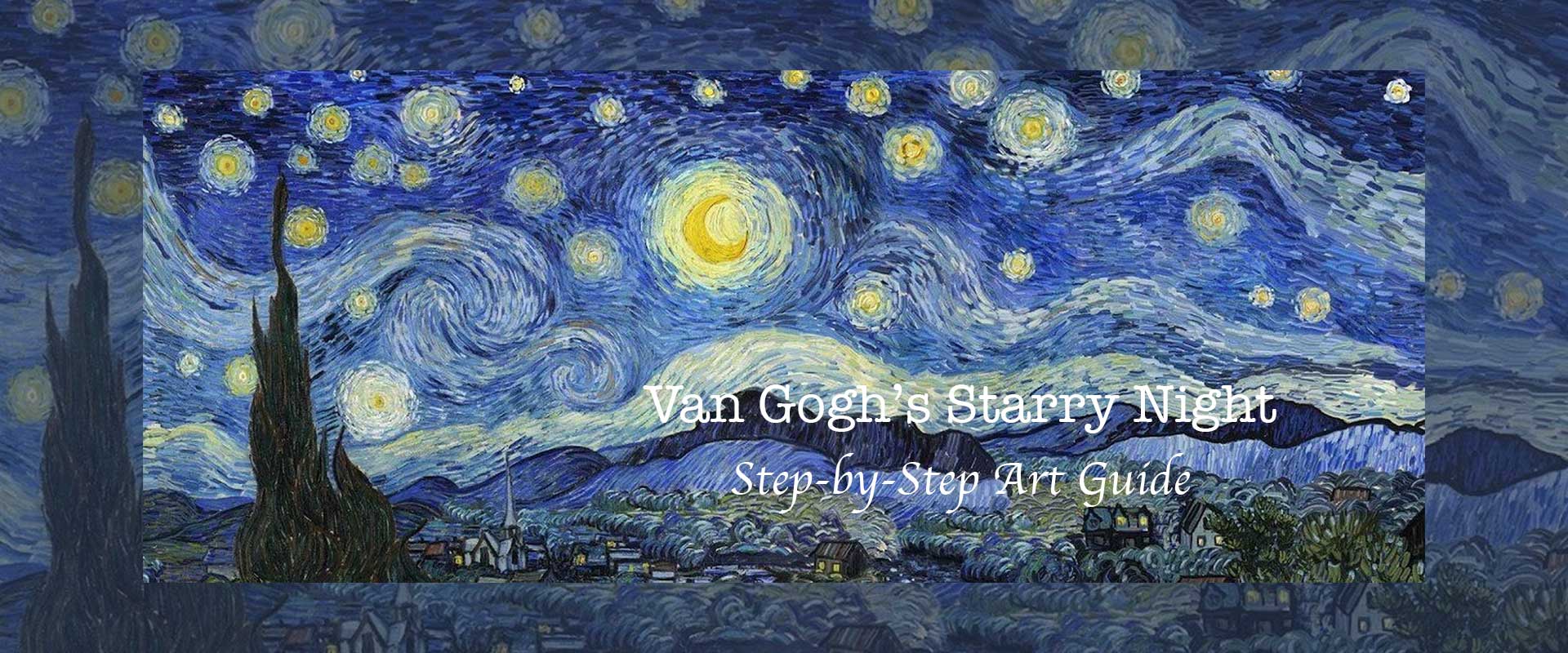Have you ever stared at Van Gogh’s Starry Night and wished you could paint it yourself? You’re not alone. This masterpiece, with its swirling skies and glowing moonlight, has captivated artists for generations. But here’s the good news—you don’t need to be a master to bring it to life on your own canvas.
In this guide, we’ll walk you through how to recreate Starry Night using Van Gogh’s techniques, color palette, and style. Whether you’re a beginner or seasoned painter, this project will help you connect with one of art history’s most iconic works while learning how to express emotion through brushwork and color.
Materials You’ll Need
Before diving in, gather your materials:
- Canvas or thick art paper (16×20 or smaller)
- Acrylic or oil paints in the following colors:
- Ultramarine Blue
- Cobalt Blue
- Phthalo Blue
- Cadmium Yellow
- Lemon Yellow
- Titanium White
- Black
- Burnt Umber
- Viridian or Sap Green
- Orange or Vermilion
- Assorted brushes (flat and round)
- Palette knife (optional, for texture)
- Palette and water jar
- Pencil and eraser for sketching
Step 1: Lightly Sketch the Composition
Using a pencil, sketch the basic layout of Starry Night. Start with the horizon line, the rolling hills, and the towering cypress in the foreground. Block in the swirling clouds, moon, and large stars in the night sky. Don’t worry about perfect accuracy—Van Gogh’s style is expressive, not exact.
Step 2: Paint the Sky’s Base Layer
Mix ultramarine blue with a bit of black and white to get a deep, moody sky tone. Cover the top portion of the canvas, using horizontal strokes and blending slightly downward. Use cobalt and phthalo blues to create variation and depth. Let the base dry before moving on.
Step 3: Add the Swirls and Stars
Start layering in the iconic swirling shapes using lighter shades—mix cobalt blue and white for the swirls. Don’t worry about precision; follow the natural rhythm of the sky. Use circular motions with your brush.
For the stars, use thick dabs of cadmium yellow mixed with white. Use a round brush to create glowing orbs with halo-like effects. Add the moon in the top-right corner using the same colors, but larger and more luminous.
Step 4: Paint the Rolling Hills
Mix viridian or sap green with burnt umber and blue to create muted tones. Use small brushstrokes and dashes to create movement in the hills. Keep the direction of the strokes fluid and wavy. Add lighter highlights with a mix of white and green to give depth.
Step 5: Create the Cypress Tree
Using burnt umber, black, and green, paint the tall, flame-like cypress. Use upward strokes and allow the tree to twist organically into the sky. Add small touches of orange and blue for dynamic shadowing. Let the tree overlap with the sky to create depth and contrast.
Step 6: Add the Village Below
Use black, grey, blue, and brown to block in the village below the hills. Keep your shapes simple—think rectangles and triangles. Add light from windows using dabs of yellow. Use a small brush to define rooftops and the tall church steeple.
Step 7: Final Highlights and Texture
Add highlights by blending yellow or white into parts of the sky and clouds. Use a palette knife to add thick, textured strokes over the swirls or stars for a more authentic Van Gogh feel. Add extra emphasis where you want the viewer’s eye to travel—around the moon, stars, and swirling lines.
Step 8: Let It Dry and Step Back
Once the painting is dry, take a moment to step back and appreciate it. Your version won’t be identical—and it shouldn’t be. Van Gogh’s Starry Night is about emotion, not perfection. Celebrate the movement, the color, and your personal touch.
Tips for Success
- Don’t overthink brushwork—energy is more important than detail.
- Use thick paint to mimic Van Gogh’s impasto style.
- Listen to music while painting to channel emotion and rhythm.
- Take breaks and return with fresh eyes for balance.
Conclusion: Channeling Van Gogh Through Practice
Recreating Starry Night is more than an art project—it’s an experience. Through every brushstroke, you step into Van Gogh’s world: one of wonder, movement, and emotion. You’ll learn not only how he painted, but why he painted the way he did.
Whether your version is close to the original or uniquely your own, you’ve created something from the heart—and that’s exactly what Van Gogh would’ve wanted.
To continue exploring art that speaks through color and motion, browse our expressionist or landscape-inspired wall prints to find more Van Gogh–inspired pieces for your home or studio.
FAQs
Do I need experience to recreate Starry Night?
Not at all. This guide is designed for beginners as well as experienced artists. Van Gogh’s style celebrates emotion over precision.
What’s the best medium to use?
Acrylics are great for beginners. They dry quickly and allow layering. Oils are more traditional and offer texture but require longer drying times.
Can I use different colors?
Absolutely. While this guide follows Van Gogh’s palette, feel free to experiment with your own mood or preferences.





